[PORTUGAL] Porto Travel Recommendation

Porto, the second largest city of Portugal, is my first stop in Portugal. Its historic centre was declared a UNESCO World Heritage site in 1996. This beautiful city was built on the hills overlooking Duoro River.
Getting in:

1) By plane: I arrived in Francisco Sa Caneiro Airport, which is Porto's international airport. There are several ways of getting to the city from the airport including metro, bus, shuttle and taxi.

The most convenient way is to take a metro, Line E (Purple line), which runs every 20 - 30 minutes. You'll reach the city in 34 minutes. The ticket can be bought from ticketing machine in the airport.
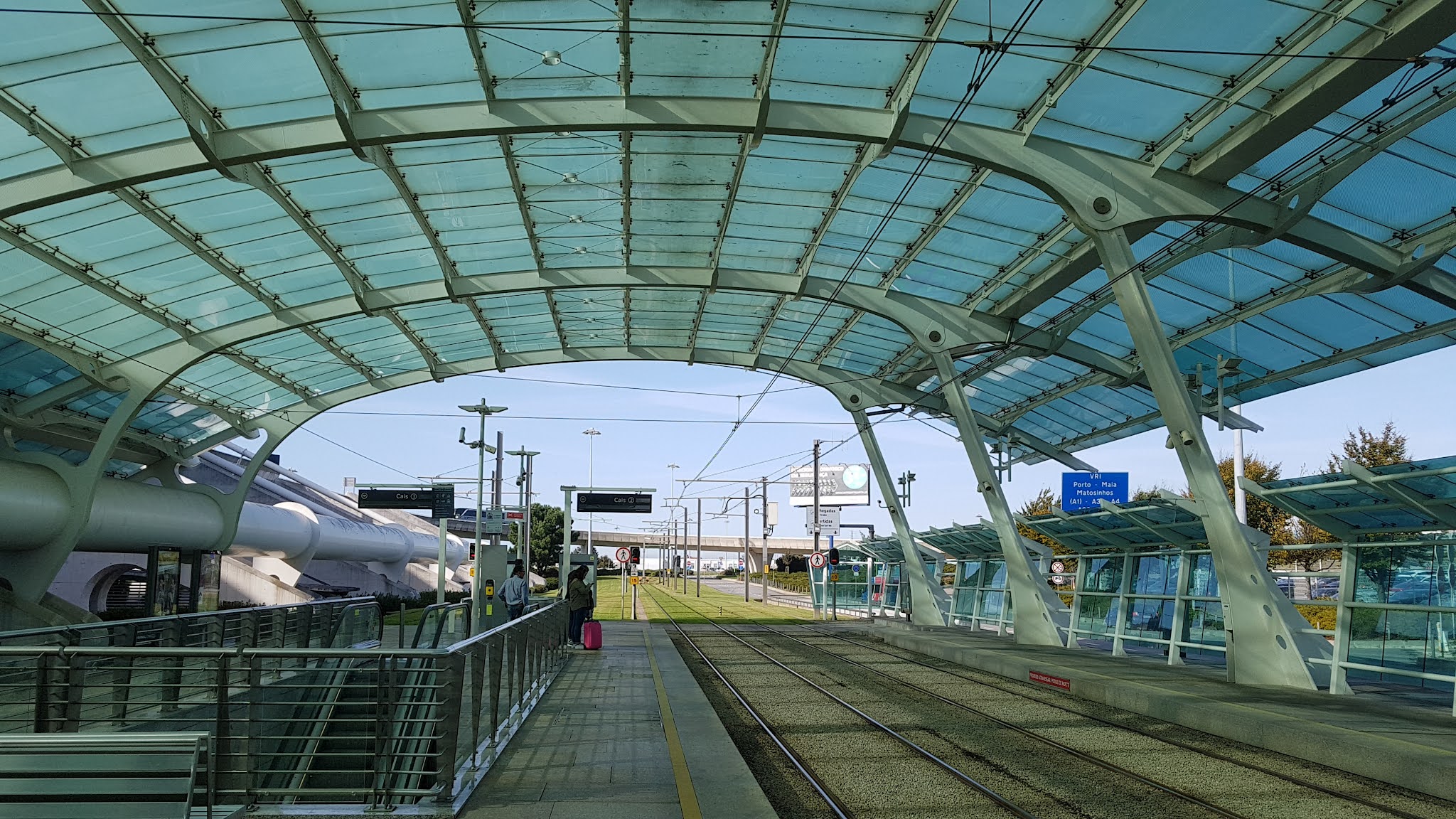
Metro station at the airport. A one-way ticket is EUR 2 (airport is in Z4). You can buy a 24-hour pass for metro and buses for EUR 6.90 at the airport (since airport is in Z4). If you only travel by metro in the city, then a Z2 24-hour pass will suffice (EUR 4.15). Card cost is EUR 0.60, so do not throw away the card as it can be re-charged. The only tricky thing is that it cannot carry more than one type of travel ticket.
If you plan to take a bus from the airport, STCP (line 601, 602 and 604) and Resende provides connections from the airport to the various areas of city. You can also book private shutter from various service providers such as https://100rumos.com (1 pax price from EUR 14). If you are arriving late at night after 1am, you can take a taxi which is available 24/7. The other options would be an hourly bus coming from Av. dos Aliados (3M-Line) or spending a night at the airport.

2) By train: São Bento station only served by local trains and selected regional and inter-regional services to Regua and Pocinho. If you want to take a train to/from Lisbon, Campanhã is the train station in Porto for the high speed line. The 5-minute transit between Campanhã and São Bento is at no extra cost using the same train ticket.
Alternatively, you can travel to Porto by car or bus.
Getting around:

By metro: The metro has 6 lines, running across the city. It opens 6am till 1am. Photo above is line D (Yellow line across the Duoro river). Metro passes which are available includes Andate 24 (price from EUR 4.15 depending on zones, travel 24 consecutive hours after the first validation, in the acquired zones), Andate Tour-1 (EUR 7, travel without limit throughout Andate transport network within 24 consecutive hours after the first validation) and Andate Tour-3 (EUR 15, travel without limit throughout Andate transport network within 72 consecutive hours after the first validation). You must validate the card before starting the trip or whenever you change vehicle.
Porto metro map above (click to see enlarged map). Important metro stations that tourist frequently use includes: Campanhã (main train station), Bolhão (historic centre), São Bento (train station and historic centre), Trindade (the only station where all six lines intersect) and Jardim do Morro (Hill Garden).

By tram: The charming vintage trams run on remaining three lines: Line 1 (Infante - Passeio Alegre), Line 18 (Massarelos - Carmo) and Line 22 (Carmo - Guindais Batalha). Single ticket is EUR 3.50. Two trips on the same day cost EUR 6.

By Funicular dos Guindais: It is a cable railway system that runs along a steep hill connecting the Ribeira neighborhood on the river bank and Batalha at the top of the city. For only EUR 2.50, you can take a one-way journey either up to Batalha or down to the river bank.
By bus: Bus is the most useful means of transport to get to certain destinations such as Vila Nova de Gaia. You can also get to Gaia by tram or metro on the upper part of bridge but it is quite far from the waterfront. You can use the Andate Tour Card on the bus.

By hop-on-hop-off bus: Like many major cities, you can take the open-top double decker buses for sight-seeing around the city. A ticket is valid for 48 hours after first validation. Ticket is EUR 18 for adult and EUR 9 for children age 4 to 12.

By Rabelo: Rabelo is a traditional Portugese cargo boat originally used to transport the barrels of Vila Nova de Gaia to Porto. Today, the boats are used as sightseeing cruises that sail down the Duoro River. A trip typically cost around EUR 17 and takes about 50 minutes.

By Teleferico de Gaia: This is the cable car service in Gaia area. It connects the Dom Luis I Bridge and Porto Wine Cellars. Maximum capacity per car is 8 person. For adult, one way trip is EUR 6 and return trip is EUR 9. For child age 5 to 12, one way trip is EUR 3 and return trip is EUR 4.50. Family ticket for 2 adult and 2 children round trip is EUR 22.50. It opens from 10am.
Website: http://www.gaiacablecar.com/Teleferico_UK.html
On foot: My favourite way to explore the city is on foot since the historic centre is a maze of narrow cobbled streets. Due to the fact that it is very hilly, remember to bring good walking shoes.
Accommodation:

I chose to stay right in the heart of the old city, just next to the São Bento metro station (see the building in the middle in photo above). It was an Airbnb apartment. The only thing I would complain is the narrow stairs that lead up to the apartment. Don't bring large suitcase.
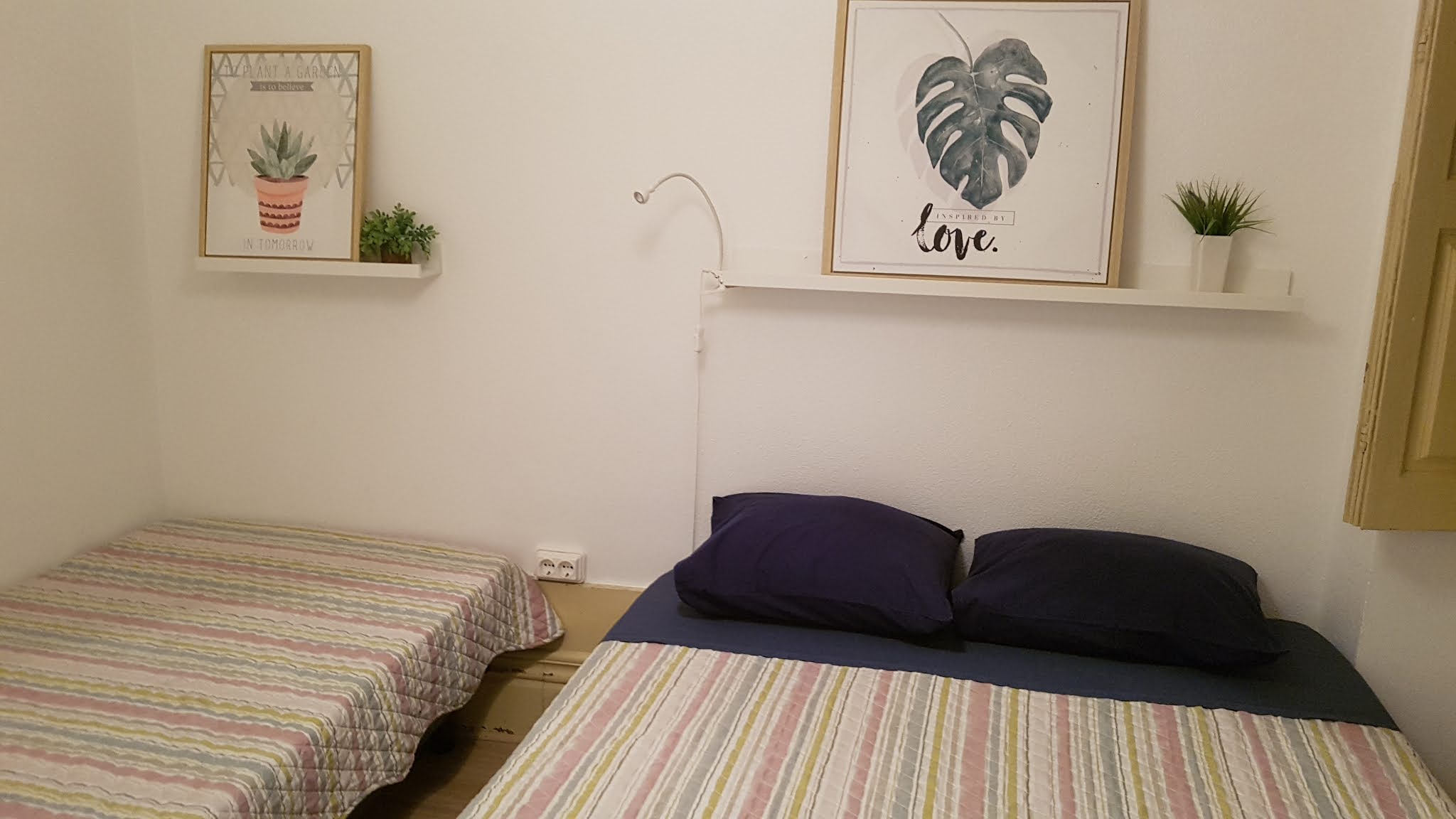



The 1 bedroom apartment was lovely although it can get a bit noisy at night since it is located in busy area. Closing the window would do the trick to reduce noise. The bedroom has a double bed and a single bed. It has a small living room, a bathroom with hot water shower and a kitchen pantry. 2 night stay cost around EUR 114 back in October 2019. Website: https://www.airbnb.com/s/homes
My itinerary in Porto:
Porto map above (click to see enlarged map). Yellow star marks the location of apartment. The attractions are quite centrally located and is within walking distance from Sao Bento despite being quite hilly.
Day 1: Arrived in Porto around 3.30pm -> check in apartment -> Porto Cathedral -> Livraria Lello bookshop -> dinner at Abadia restaurant
Day 2: Capela das Almas de Santa Catarina (chapel) -> passed by Shopping Via Catarina -> passed by Majestic Cafe -> Igreja de S.Ildefonso (church) -> City Hall and Porto sign -> Liberty Square -> passed by Castelbel shop -> Igreja de S. Nicolau (church) -> Cais da Ribeira -> Ponte Luis I (bridge) -> Vila Nova de Gaia -> Monumento ao Infante D. Henrique -> Palacio da Bolsa -> lunch at Cafe Santiago -> Igreja do Carmo (church) -> Igreja dos Carmelitas (church) -> Igreja dos Clerigos (church and bell tower) -> Igreja de Santa Clara (church exterior only) -> sunset view at Miradouro da Serra do Pilar -> dinner at Arroz de Forno restaurant -> night view of Ponte Luis I at Jardim do Morro (park)
What to See:
1) Porto Cathedral

Porto Cathedral is one of the most important historic landmarks in the city. It is located on top of a hill. The construction of the cathedral began during the 12th century but it was rebuilt and renovated numerous times throughout the century.





The cloister dates back to 14th century and is decorated with tiles painted with some scenes from the Bible.


Interior of the cathedral. A local story said that in 1809, when Napoleon's Grand Army entered the city, priests and members of congregation painted the altar to hide the silver. The French troops never noticed that and left the silver alone.




The cloister as view from the upper floor.


From the cloister, you can also visit the Casa do Cabildo, which features the Cathedral Treasure.


Chapter Room in the Casa do Cabildo.

Saint Vicent Chapel has a golden altar.



View of the city from the square where the cathedral is.

Entrance fee: EUR 3 (adult), EUR 2 (student/group above 10), EUR 5 for combined ticket (cathedral + Bishop's Palace)
Opening hours: 9am - 5.30pm (Nov - Mar), 9am - 6.30pm (Apr - Oct)
2) Livraria Lello bookshop

Livraria Lello is a famous book shop in Porto built since 1906. It is dubbed as one of the world's most beautiful book shops. The centerpiece of the book shop is the beautiful wooden staircase and bridge which was said to have inspired JK Rowling, author of Harry Potter.




The book shop got so famous that it is always swarmed with eager tourists waiting to snap Insta-worthy photo of the staircase. Since 2015, the book shop started to charge entrance fees, but it does not deter people from entering. Now visitor must buy a ticket voucher to enter the book shop. Its value is discountable on the purchase of any one book. The priority ticket voucher provides for priority entrance and includes the purchase of a book. The location of the book shop is nearby Igreja dos Clerigos and Igreja do Carmo.


I was the last batch of visitors who got in that evening as I nearly mistaken the date of my ticket voucher to be the next day. Fortunately my hubby reminded me to double check, or else the ticket would be wasted. Take note that baby stroller is not allowed in the shop. I had to find a place to temporarily place my stroller before getting in.



There are lots of lovely details if you care to look in the book shop.

The large stained glass ceiling of the book shop is worth a look. It bears the book shop's monogram and motto "Decus in Labore" meaning "beauty in labour".


My favourite shots after the book shop is closed.
Tip: If you want lesser people in the background while taking photo in the book shop, try to come in as the last batch of visitors before closing time. The employees did not immediately kick everyone out from the book shop at its closing time, the upper floor will be closed off first. But one can still linger around for a couple minutes to take photo on the ground floor.
Ticket voucher: EUR 5 (normal), EUR 15.90 - EUR 17.90 (priority)
Opening hours: 9.30am - 7pm
Website: https://www.livrarialello.pt/en/home
3) Capela das Almas de Santa Catarina (chapel)


Capela das Almas de Santa Catarina is a chapel dating from early 18th century. In 1929, the outer facade were faced with tiles by Eduardo Leite, produced by Fabrica de Ceramica Viuva Lamego.


Really love the blue and white tiled facade of this chapel. These photos of the tiled facade were taken across a busy road.


Nearby the chapel, an unique building piqued my interest. It is Shopping Via Catarina, a shopping mall that opens from 9am to 8pm. It has restaurants on 4th floor and stores on 1st-3rd floor. From the looks of its website, it seems like a good shopping mall to visit. Website: https://www.viacatarina.pt/en/home/
4) Igreja de S.Ildefonso (church)


Igreja de S.Ildefonso is situated closed to Batalha Square and dates back to the 18th century. The striking facade of the church has over 11,000 classic blue and white azulejos, added in 1932, depicting the life of Saint
5) City Hall and Porto sign



My next stop was the City Hall and Porto sign in front of it.
6) Liberty Square



Walking towards Liberty Square from the city hall. In the center of Liberty Square is the statue of King Pedro IV, inaugurated in 1866.


Passed by Castelbel shop. The big black and white fragrance diffuser outside the shop are really eye-catching. It is a shop selling soap and other fragranced luxury products. A group of people was gathering in front of the shop. I think most likely it is a shopping stop for a tour group.
7) Igreja de S. Nicolau (church)


Igreja de S. Nicolau was rebuilt on the old medieval small church site. It is located opposite the
8) Cais da Riberia

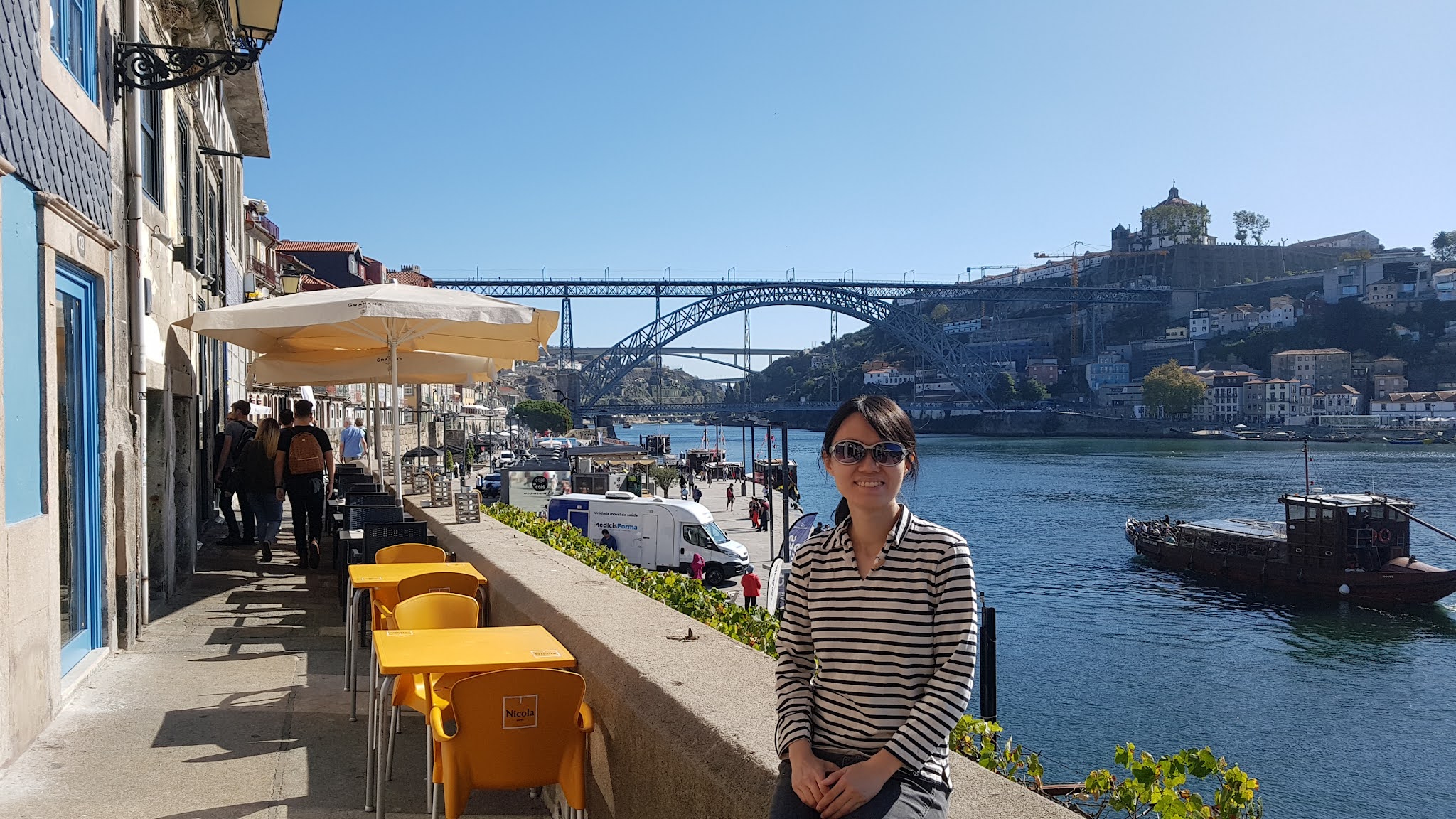


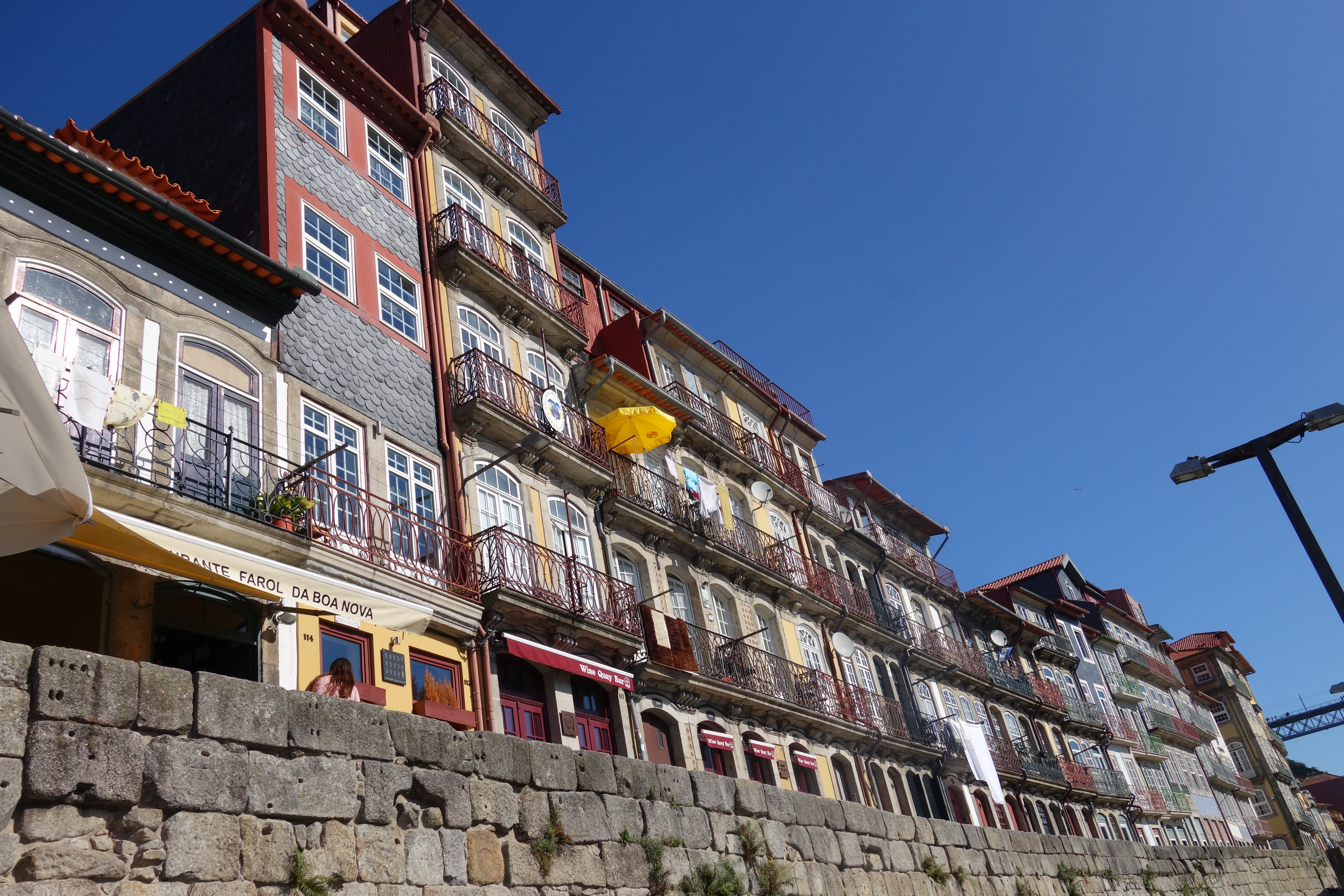



From Igreja de S. Nicolau, I continued to walk along the river bank of Duoro River.
Porto's riverside quarter known as the Riberia, is one of the city's oldest neighbourhood. Cais da Ribeira on the quay side is a long strip of restaurants, bars and shops overlooking the river and Vila Nova de Gaia on the opposite bank. There are many old, colourful buildings built by rich merchants on the steep slopes leading up from the quay.9) Ponte Luis I (bridge)
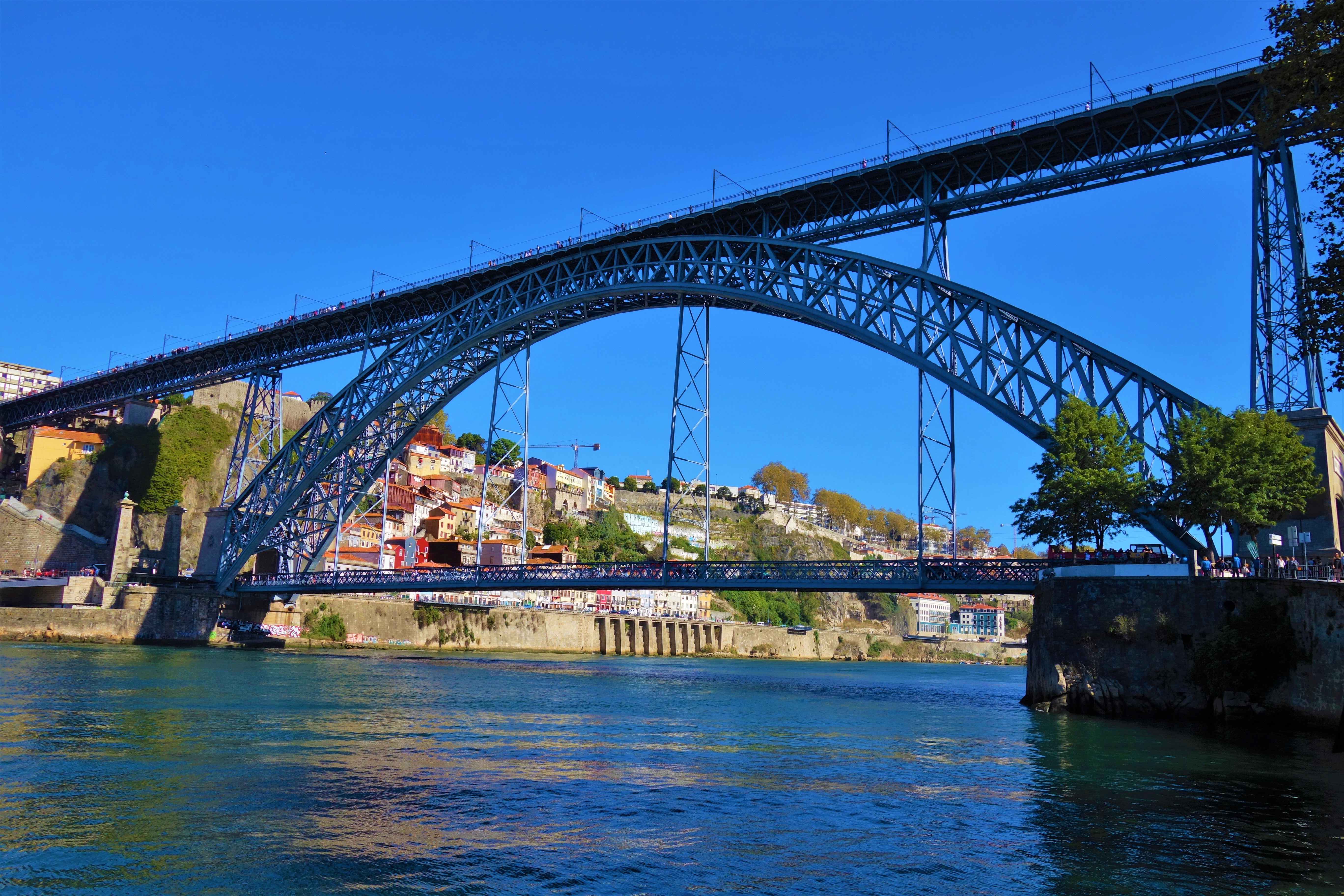
Ponte Luis I was inaugurated on 31 October 1886. This bridge is built of two metal trays supported by a great iron arch and five piers with maximum span of around 391.25m.

This bronze plate set in 1897 in memory of the deceased in the "Ponte das Barcas" tragedy. The tragedy happened on 29 March 1809, when the bridge collapsed under the weight of people fleeing from the French troops of Soult.

These two incomplete granite piers were all that remains of the suspension bridge that was stopped being used in 1887.



Crossing the bridge to the Gaia area.

View from the bridge.
10) Vila Nova de Gaia


Vila Nova de Gaia (or simply Gaia to locals), is famous for its port and port wine. This is where barrels of wine loaded or unloaded for hundreds of years.


After crossing the bridge, there is a good photo spot to take photo of Ponte Luis I and Riberia.



Founded in 1638, Kopke is the oldest port wine house, so I decided to go in to have a look. Kopke is best known for Colheitas - single vintage Tawny and White Ports aged in oak barrels and bottled on demand.


Along the river bank, there are stores selling local handmade products which are perfect for souvenirs.


These boats are called Rabelo. It is a traditional Portugese cargo boat originally used to transport the barrels of Vila Nova de Gaia to Porto. I had a nice time strolling along the river bank. Afterwards, I walked back to da Bolsa (Stock Exchange Palace) as it was time for my guided tour to visit its interior.
11) Palacio da Bolsa

Palacio da Bolsa is a 19th century building owned by the Porto Commercial Association and is located on Praca do Infante D. Henrique.

In front of Palacio da Bolsa, there is a statue of Prince Henry the navigator, in battle dress, beside a globe and symbolically pointing overseas. The red building behind the statue is a market called Mercado Ferreira Borges.



The half-hour guided tour is available in four languages: Portugese, Spanish, English and French. I chose English tour, of course. I began my tour by entering Hall of Nation. The lower part of the glass dome is decorated with painted coats-of-arms of Portugal and the countries with which Portugal had commercial relations in the 19th century.


This is the Noble Staircase that lead up to first floor.

The ceiling frescoes were painted by Antonio Ramalho.

Court Room.

Presidents Room.

General Assembly Room. What looks like wood in this room is actually painted plaster.

Portrait Room.


Arabian Room is the jewel of the Palace. The construction of this emblematic space took place over 18 years. With the implementation of the Republic, on 5 October 1910, Palacio da Bolsa is inventoried and vacated.
Entrance fee: EUR 10 (adult), EUR 6.50 (student/pensioner), free for children up to 12
Opening hours: 9am - 1pm, 2pm - 5.30pm (Nov - Mar), 9am - 6.30pm (Apr - Oct)
Website: https://palaciodabolsa.com/en/intro/
12) Igreja do Carmo & Igreja dos Carmelitas (church)

Igreja do Carmo (right) and Igreja dos Carmelitas (left) are two churches in Porto that stand almost side by side. The two churches are separated by a very narrow (1 meter wide) house that was inhabited until the 1980's. The house is open for visit with an entrance ticket.

Interior of Igreja do Carmo.
13) Igreja dos Clerigos (church and bell tower)


The architectural complex of Clerigos was built for the Brotherhood of the Clerigos on the "hill of the hanged man", where the executed prisoners were buried. The tower and the church are adjoined to the House of the Brotherhood. Photos above show the tower end.
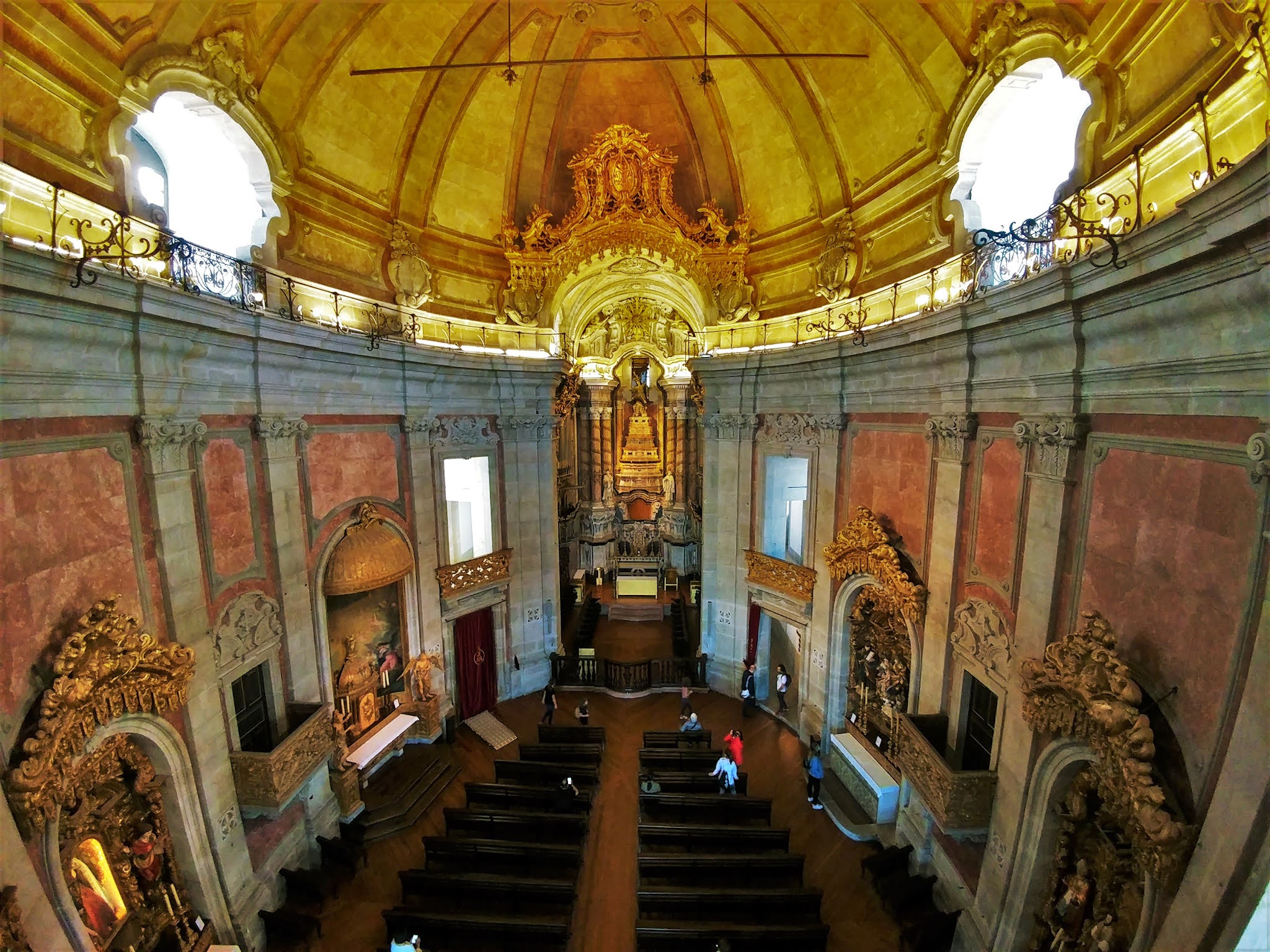
Interior of the church.

The Assembly House was where the board members gathered to make decisions regarding the management of the brotherhood.




The tower is 75.6m high and it is recommended to climb to the top of the tower to see the commanding view of the city and Duoro River. There are 49 bells which form a large carillon on top of the tower.

Exterior of Igreja dos Clerigos.
Entrance fee: free entrance for church, EUR 6 for tower and Museum of the Brotherhood, EUR 5 for night pass (7pm - 9pm for tower only)
Opening hours: 9am - 7pm daily
14) Miradouro da Serra do Pilar

Miradouro da Serra do Pilar is a viewpoint that offers breath-taking view of the city walls, Ribeira, the Duoro River and Ponte Louis I. Photo above is Serra do Pilar church. It is one of the highest point of Vila Nova de Gaia.


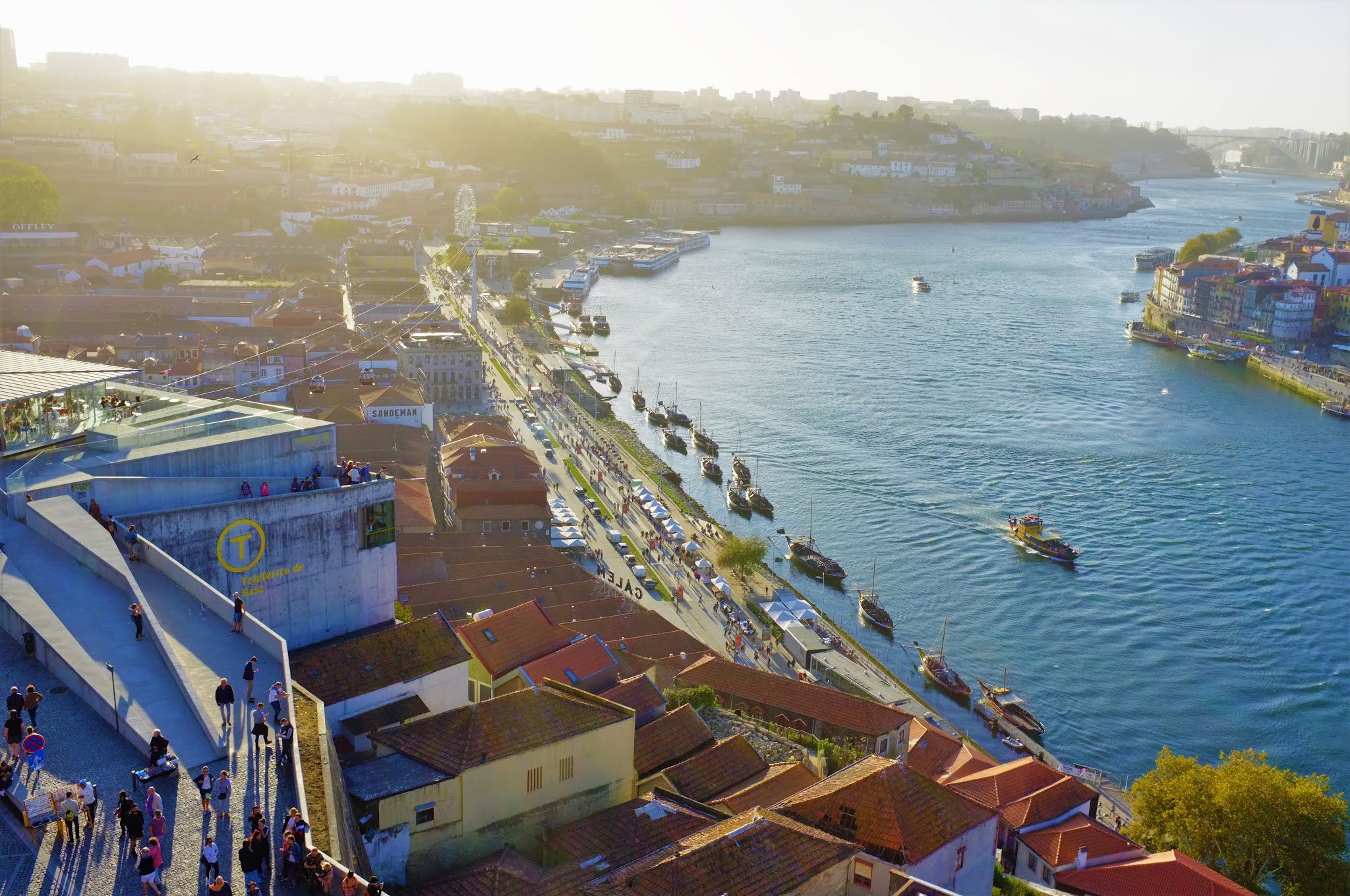
View from Miradouro da Serra do Pilar.
15) Jardim do Morro (park)





Jardim do Morro is another great place to see panoramic view of the city. It is reachable by crossing the upper level of Ponte Louis I. You can also ride the metro and get down at Jardim do Morro station. Both the sunset and night view of Ponte Louis I are stunning.
What and Where to Eat:


Francesinha is a Portugese sandwich originally from Porto. It is covered with melted cheese and often served with French fries. It is a must try food in Porto.
Cafe Santiago


I would recommend Cafe Santiago as the place to try Francesinha . The Francesinha here is as good as advertised. I preferred the plain version without the fries and egg though. The special version is too heavy taste for me.
Opening hours: 11.30am - 10.30pm daily
Price: Francesinha - EUR 8.75, Francesinha with fries - EUR 9.25, Francesinha Santiago - EUR 9.75
Website: https://cafesantiago.pt/en/
Abadia restaurant


On my first night in Porto, I went to Abadia restaurant which offers traditional Portugese cuisine. The name Abadia translates as "abbey". The restaurant environment is comfortable and they have menu in both Portugese and English.

Cardo Verde is a traditional soup with thinly sliced kale. Besides the soup is Bolinhos de bacalhau (deep fried codfish cake) which is crunchy on the outside and creamy on the inside. Both dishes were great as starters.


The main dishes are Tripas a Abadia (tripe stew with beans) and Bacalhau com natas (oven baked dish consisting of layers of bacalhau fish, cream, thin fries and onion). I preferred Bacalhau com natas, hands down. Overall, it is a good place to try Portuguese cuisine with reasonable price.
Opening hours: 6.30pm - 10.30pm (Mon), 12pm - 3pm & 6.30pm - 10.30pm (Tue - Sat), closed on Sundays
Website: https://abadiadoporto.com/en/
Arroz de Forno

The other restaurant that I had dinner was Arroz de Forno.

Sausage board consisting of Alheira and Chourico (grilled sausage).

Arroz de Tamboril (monkfish and prawn rice stew)

Roasted Cabrito with Arroz de Forno. Cabrito is goat kid which are milk-fed. The meat is more tender. Overall, I would say this is the most memorable meal I had in Porto. Both the monkfish and prawn rice stew and Roasted Cabrito were really delicious. Highly recommended.
Opening hours: 12pm - 11pm (Sat & Sun), 12pm - 3pm & 6.30pm - 11pm (Tue, Wed - Fri), closed on Tuesdays
Website: https://www.facebook.com/restaurantearrozdeforno/
 Many people also recommend Majestic Cafe which is a historical cafe.
Many people also recommend Majestic Cafe which is a historical cafe.Overall, Porto is a lovely city. There's plenty to see and do in the city. I would recommend to stay at least two nights to fully discover its charm. Thank you for reading.





![[MALAYSIA] How To Do A Self Guided Walking Tour in Kota Kinabalu](https://blogger.googleusercontent.com/img/b/R29vZ2xl/AVvXsEgR_cJjX4Shl9rsz0ufzxjmtLMq5PAvmTNDHypSVV2CYDaarZVj8EMznRkXqdVeCGg2yEMdFqPtI5rvrmMtJVSL1W9jqOtdCM2EFAc5ZTWn7XzPQV5sqS4s1DO0T_AuF0nq_dLQ53b9-ju3yyLJUrvU2TlhbmD4rDDV5-aPFaT2WEQZ1c257JXGUhyfsw/s72-c/20220524_131141.jpg)
![[FRANCE] My Favourite Paris Eiffel Tower Photo Spots](https://blogger.googleusercontent.com/img/b/R29vZ2xl/AVvXsEi220KHLfBDpyO53KorHwAb0KQEuiiaVDlrFYwEEAvs8YvKb-Edmyt7Hl7rZszN6qc-GM4e3SmjBS2pUiCiv8ljl8mnrUR93Ljxb0xGrSZ4sZLPRErpbAj29btKvnIC67xV93iKnrH3QRcc/s72-w781-c-h505/DSCF4372.JPG)
![[JAPAN] Osaka Universal Studio](https://blogger.googleusercontent.com/img/b/R29vZ2xl/AVvXsEilW88BKY24KkvC4WjRfTktmxFmylxMsDD8emYT93x8bOlgqzMV1feAp28Si_GPn3hyFD2E97CMmP3X6kceDfFa9WB_7qr2BFvmu20iVJRaNlZd1BfoyUUj5ZgofOgK5lZGoqVDS4-1YLTo/s72-c/?imgmax=800)


![[MONACO] How To Visit Monaco In One Day From Nice](https://blogger.googleusercontent.com/img/b/R29vZ2xl/AVvXsEgZkJeVAOmz4LTRwY2uDTK131UJVUWH_44GUUU3H-ni63dK2BlNqITBIh5Tdcpz9kXTUb7ePW7f-PQ1Y7E6B4lnqKEHs_nL3Eop-ouoFhxayMI4lNCcUG-oJnGMVwpGDlBu8lfgn10H_QHw/s72-c/DSC06605.JPG)

![[MOROCCO] My Day Trip to Blue City of Chefchaouen From Fez](https://blogger.googleusercontent.com/img/b/R29vZ2xl/AVvXsEh-7PIqgkIbF1BtTIOwfZ2R611OUrvV7f4Uxih57is62V_QD_DySCdifgR250MMruySrRmV7UMQ14iRsQZ6ifAaAWTqYacWSu__Lpm6QuqEjUcMZ4IJz-0SLDKeCV-nn6Zk1qbyMtMaZf4YupMArl4gXmmXoQUxHc6T-_eW-X2jvjh47rlu4Ddq4_Q48g/s72-c/DSC07946.JPG)
A thorough and detailed post. I enjoyed the photos. Thank you for sharing.
ReplyDelete